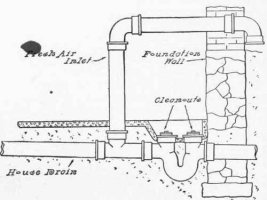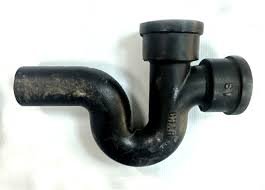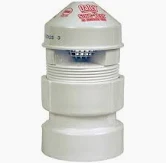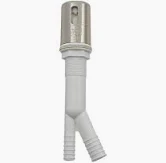Anyone who has spent time working in Northeastern Pennsylvania knows how stubborn some sewer authorities can be about old practices. Back when I worked in the Wyoming Valley, one of the biggest fights I had was over their requirement for whole-house traps. These things have not been part of modern plumbing design for decades, yet some authorities cling to them as if we are still living in 1929.
For its time, the house trap served a purpose. Plumbing codes evolved. Venting systems became mandatory. Fixture traps became the standard. The house trap stayed behind as an unnecessary relic.
The International Plumbing Code is clear. IPC 1002.1 states, “A fixture shall not be double trapped.”
I saw the problems firsthand in old homes throughout the Wyoming Valley. Once that main trap was clogged, the entire building backed up. Everything came to a halt at that one point. Cleanouts were harder to use, and owners ended up calling for service more often. Instead of protecting public health, the traps made plumbing systems less reliable.
Click on each image to view in larger format.



Why They Were Installed
Whole-house traps go back to a time when homes were not properly vented and sewer systems were rough around the edges. They were a crude way of keeping sewer gas and rodents from backing into a building. To make them work, plumbers tied in what they called a fresh air intake. Anyone from that region has seen them: a small pipe near the foundation with a grate or, later, a gooseneck. The idea was simple. Pull in some outside air so the system on the house side of the trap does not choke off. It was never a true vent. A vent carries gases up and out. The intake only pulled in air.For its time, the house trap served a purpose. Plumbing codes evolved. Venting systems became mandatory. Fixture traps became the standard. The house trap stayed behind as an unnecessary relic.
Why They Create Problems
Modern codes already require that every fixture has its own trap and is tied into a vent system. The main vent stack that runs out the roof is designed to equalize pressure and release gases safely above the building. A whole-house trap does nothing but create a second barrier. That means you now have a double trap. Wastewater slows down, siphoning can occur, and blockages are more likely.The International Plumbing Code is clear. IPC 1002.1 states, “A fixture shall not be double trapped.”
I saw the problems firsthand in old homes throughout the Wyoming Valley. Once that main trap was clogged, the entire building backed up. Everything came to a halt at that one point. Cleanouts were harder to use, and owners ended up calling for service more often. Instead of protecting public health, the traps made plumbing systems less reliable.
The Excuses You Hear
The best one I ever heard from a sewer authority was this. If somebody pours gasoline in a storm drain, the house trap keeps vapors from backing into a home and blowing it up. That is not only ridiculous, it is wrong. Sanitary sewers are gravity systems. They are not pressurized pipelines. Vapors move to the nearest manhole or the vent stack of the building. They do not build pressure and sneak into a house through the drains. That argument is folklore dressed up as engineering.The Reality of the Fresh Air Intake
One thing that always comes up is whether those little fresh air intakes let sewer gas out. The answer is no, not under normal conditions. They are on the house side of the trap. Any sewer gases that exist in the system travel up and out the roof vent, not out of that little grate or gooseneck. The intake was never intended to be a vent. It was only there to help air flow behind a trap that should not exist anymore.Moving Forward
As building official, I forced the issue. If the authority insisted on whole-house traps, they were not installed inside buildings. They had to go outside so they could be accessed without creating headaches for the plumbing system indoors. That was a compromise, but it did not change my opinion. These traps are relics. They were designed for a time when plumbing was crude and venting systems were incomplete. They have no place in modern plumbing.TBCF Closing Thoughts
Owning The Building Code Forum gives me a platform to say this clearly. Whole-house traps are a 1920s solution to 1920s problems. They cause more harm than good in today’s systems. If you are still being told to install them, it is not because of code. It is because of old thinking that refuses to move forward. Plumbing is about solving problems, not keeping problems alive.Click on each image to view in larger format.





